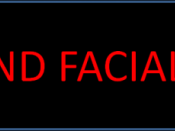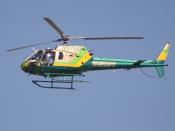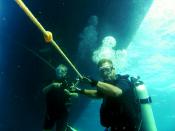Los Angeles County Sheriff's Department's own, John Yarbrough pulled over a sports car at 2 in the morning in an area of Los Angeles known for drunk drivers, guns, and dope. A man jumped out of the Passenger side pointing the gun at Yarbrough, yet something told him not to annihilate the suspect.
Years later, Yarbrough worked with psychologists to help train Police officers. They had a series of videotape tests of people lying and telling the truth, talking about general subjects. They gave the tests to the FBI, CIA, DEA, etc. Most of them scored about fifty percent. They would have done the same had they just guessed. Among others though, John Yarbrough did exceptionally well, which suggests that his hunch was something more, and that something in the man's face told him not to shoot.
We all read faces to determine whether or not someone is telling the truth.
There are different facial expressions that indicate a person's true feelings. Paul Ekman began to research these facial expressions in the nineteen-sixties, and realised that no one knew the answers to his questions. He decided to travel around the world studying the facial expressions of different cultures. His research showed him that facial expressions were universal products of evolution, and they weren't learned through culture. Ekman then assembled a videotape library of people's faces and studied them until he could pick up the slightest flicker of emotion.
Ekman and Friesen went through medical textbooks that outline the muscles in the face, and figured out all of the different movements that the face could make. They documented 10,000 configurations of 5 muscles. It took seven years, and most of the configurations mean nothing, but 3,000 of them do. Ekman and Friesen eventually assembled all of the different facial combinations...


